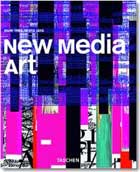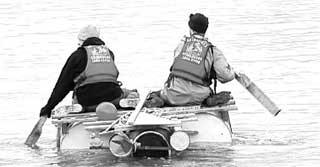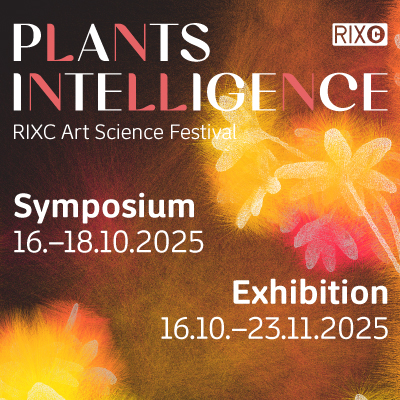 New Media Art (Basic Art S.) (USA – UK) by Mark Tribe (artist, curator and founder of rhizome) and Reena Jana (critic, author and editor.)
New Media Art (Basic Art S.) (USA – UK) by Mark Tribe (artist, curator and founder of rhizome) and Reena Jana (critic, author and editor.)
I had the very bad idea of buying this book in its french version. French is my mother language and i’m much more at ease with it than with english (as i’m sure everyone has noticed). However i’m not used to reading anything related to technology and new media art in french so the text looked both droll and fake to me: la toile (the net), la distribution numérique (digital distribution), le cyberespace (cyberspace), les logiciels (softwares), etc. I’m not blaming the translator, it’s just me. I’ve lost contact with the language.
What do i think of the paperback? Well… it shouts “bargain!” It’s so cheap that i’d feel nasty to utter any complain about it. The book does exactly what this extract from its presentation by the editor claims: This book addresses New Media art as a specific art historical movement, focusing not only on technologies and forms but also on thematic content and conceptual strategies.
There’s plenty of big images -which i always welcome, a succinct introduction and some 30 projects which are very clearly and efficiently analyzed. But i’ll have to add a negative note: i would have like to read a kind of curatorial statement that explains why and how the 30 (mainly net.art) projects presented in the book have been selected. How do they relate to each other? Why do these art works represent better than other the state of media art today?
If you know everything about new media art, you might not learn much in the book but will enjoy passing through some of the best exemples of its expression; if you’re a total beginner i’m not sure you’ll turn into a convert but anyone who stands in between should find it well worth the few coins they’ll throw at the bookshop.
Now for the project i discovered through this book…
 Borderxing Guide by Heath Bunting and Kayle Brandon is a detailed documentation of walks that cross borders between European countries illegally; a guide to movement without interruption from customs, immigration, or border police. They provide maps and tips about the tools to bring along.
Borderxing Guide by Heath Bunting and Kayle Brandon is a detailed documentation of walks that cross borders between European countries illegally; a guide to movement without interruption from customs, immigration, or border police. They provide maps and tips about the tools to bring along.
The BorderXing guide is an online resource but it is not accessible to all. To view the site you must travel to a social space that has registered with the project and has been granted access to the web server. Casual browsers and net-pundits are faced with an administrative barrier and must travel to an unfamiliar place, and those who want access for themselves must share it with others.
(Image)








